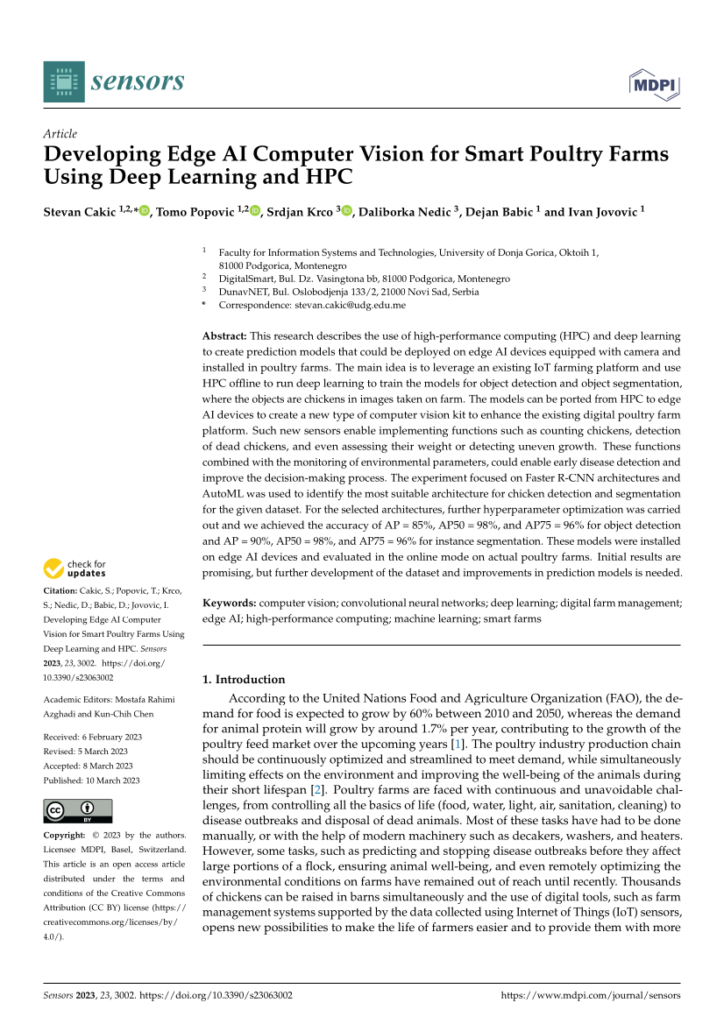Researchers from the AIMHiGH team published a scientific paper in MDPI journal Sensors, This article belongs to the “Special Issue Novel Architectures and Applications for Artificial Intelligent and Internet of Things Ecosystems” (link). The paper “Developing Edge AI Computer Vision for Smart Poultry Farms Using Deep Learning and HPC” by S. Cakic, T. Popovic, S. Krco, D. Nedic, D. Babic, and I. Jovovic reports on the approach, experiences, and results of using HPC and AI to develop advanced Edge AI computer vision solutions for smart agriculture systems. AIMHiGH project is implemented as an experiment done in the context of FF4EuroHPC project. FF4EuroHPC is a European initiative that helps facilitate access to all high-performance computing-related technologies for SMEs and thus increases the innovation potential of European industry. Whether it is running high-resolution simulations, doing large-scale data analyses, or incorporating AI applications into SMEs’ workflows, FF4EuroHPC connects business with cutting-edge technologies. Learn more at: link.
ABSTRACT – This research describes the use of high-performance computing (HPC) and deep learning to create prediction models that could be deployed on edge AI devices equipped with camera and installed in poultry farms. The main idea is to leverage an existing IoT farming platform and use HPC offline to run deep learning to train the models for object detection and object segmentation, where the objects are chickens in images taken on farm. The models can be ported from HPC to edge AI devices to create a new type of computer vision kit to enhance the existing digital poultry farm platform. Such new sensors enable implementing functions such as counting chickens, detection of dead chickens, and even assessing their weight or detecting uneven growth. These functions combined with the monitoring of environmental parameters, could enable early disease detection and improve the decision-making process. The experiment focused on Faster R-CNN architectures and AutoML was used to identify the most suitable architecture for chicken detection and segmentation for the given dataset. For the selected architectures, further hyperparameter optimization was carried out and we achieved the accuracy of AP = 85%, AP50 = 98%, and AP75 = 96% for object detection and AP = 90%, AP50 = 98%, and AP75 = 96% for instance segmentation. These models were installed on edge AI devices and evaluated in the online mode on actual poultry farms. Initial results are promising, but further development of the dataset and improvements in prediction models is needed.


